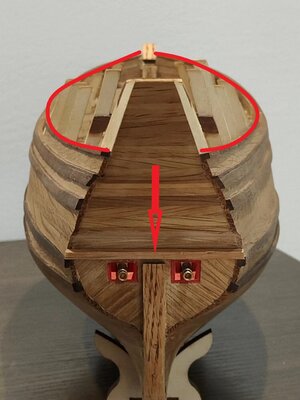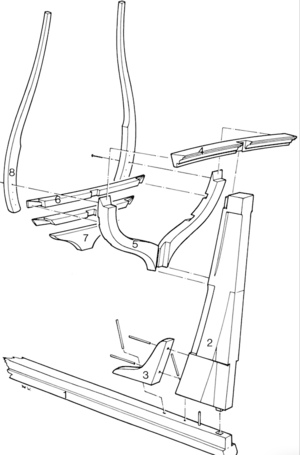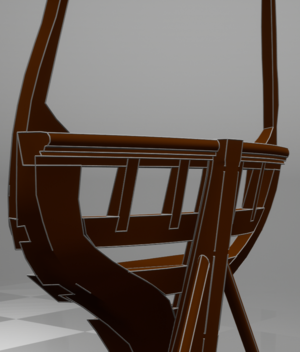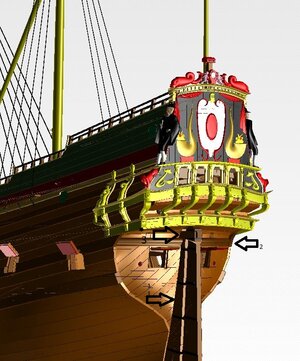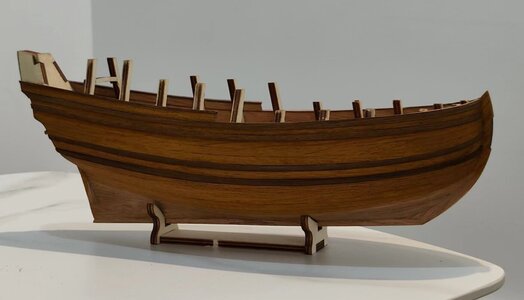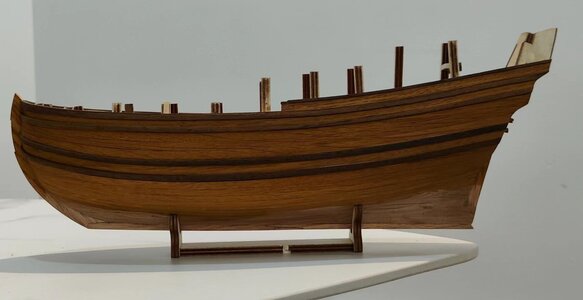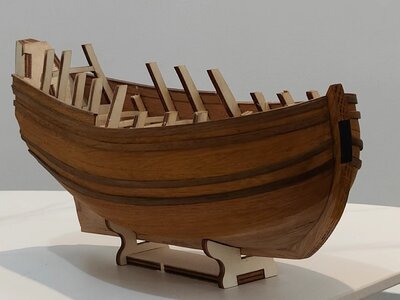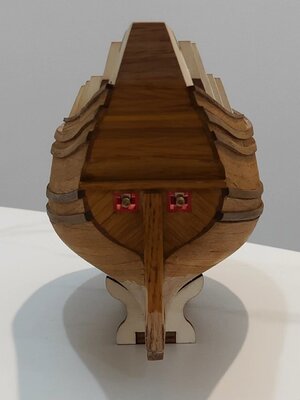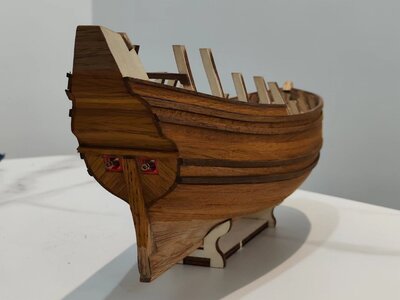- Joined
- Jan 9, 2020
- Messages
- 10,534
- Points
- 938

Hi Paul. I followed the kit instructions - as I did on WB #1 - and did not even think twice about it.Should be one continuous piece not two???
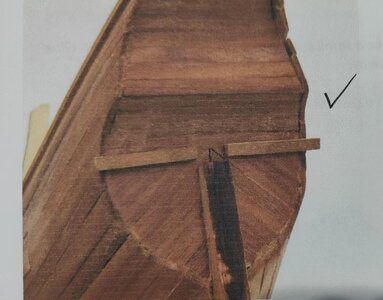

The above - which shows the two pieces - are directly from the @Kolderstok instruction manual. I also understand why Hans has done it this way - it is to allow for the rudder to lie "flat" against the false keel and to fit in between the two shorter pieces.
But now you have me thinking. On the drawings it is impossible to tell whether it was supposed to be one or two pieces. On Ab's model (below) where I have indicated the hekbalk with the two yellow arrows, it is also difficult to make a definitive call.
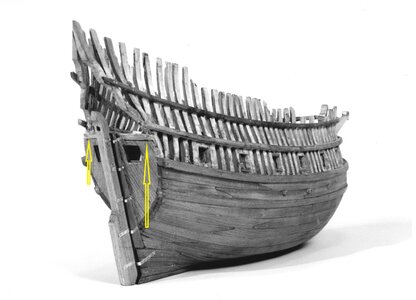 However, looking at this picture of the replica, there is no doubt that they have it as one, continuous piece - just like you said.
However, looking at this picture of the replica, there is no doubt that they have it as one, continuous piece - just like you said.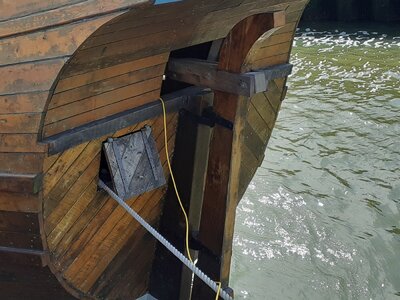
So, my friend, I don't know. You can bet your bottom dollar I will find out though! Thank you so much for that observation, Paul! It is great to have my friends think along and your question may well have pointed to something that would otherwise have been incorrect! Thank you for that!




@Kolderstok Hans, did the hekbalk consist of one piece or two?




